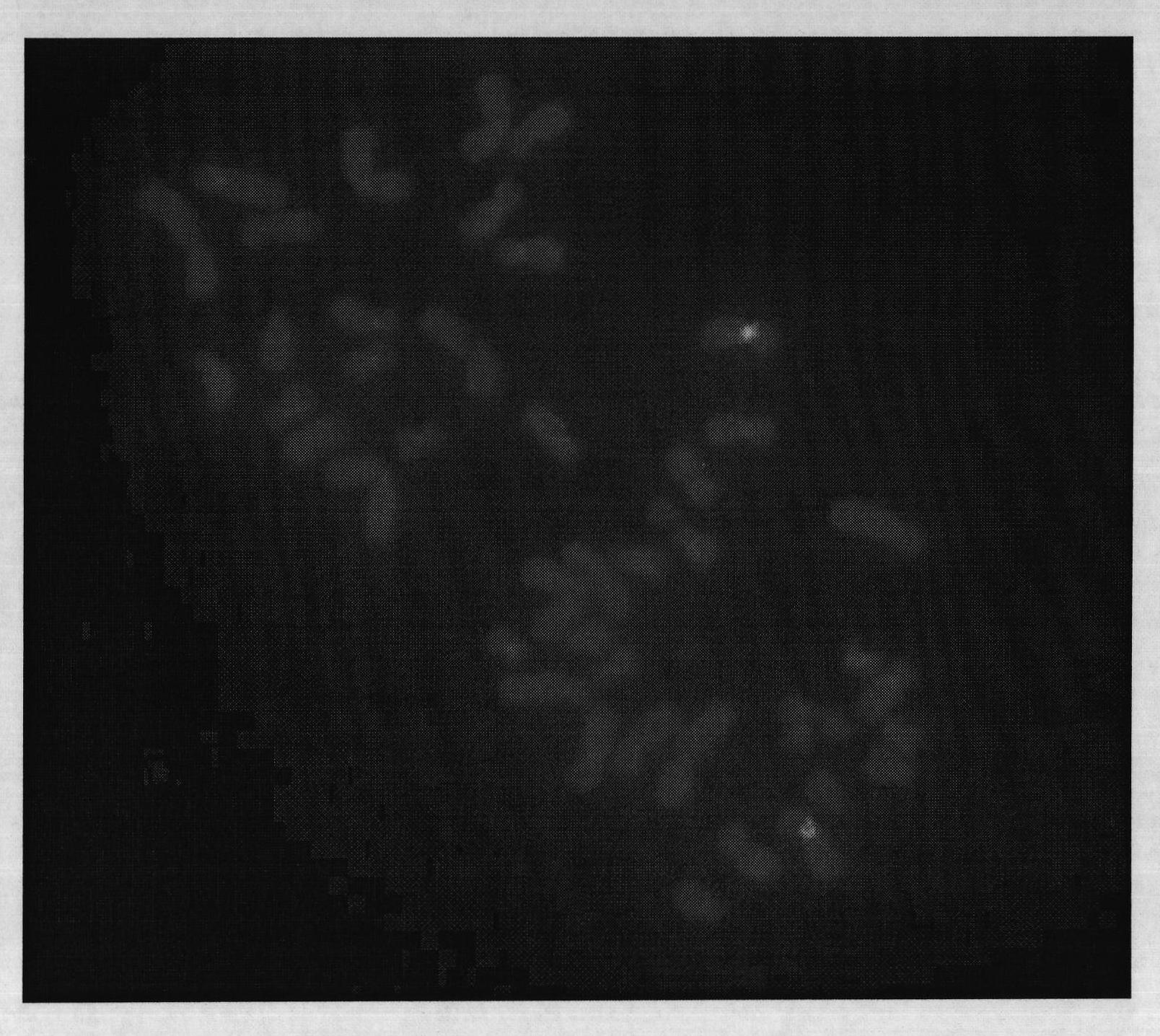Reagent for detecting copy number of EGFR gene and ploidy of chromosome 7
A technology of chromosome ploidy and gene copy number, applied in the field of life science and biology, can solve the problems of high mortality, poor sensitivity, and lack of early diagnosis methods for lung cancer.
- Summary
- Abstract
- Description
- Claims
- Application Information
AI Technical Summary
Problems solved by technology
Method used
Image
Examples
Embodiment 1
[0054] Embodiment 1: cell culture
[0055] 1) The original bacterial solution (human genome bacterial artificial chromosome (BAC) clone, purchased from Invitrogen Company) was spread on a plate and cultured at 37°C overnight.
[0056] 2) Pick a single colony, put it in 5ml LB medium (tryptone 10g / L, yeast extract 0.05g / L, sodium chloride 10g / L, pH7.0), shake the bacteria overnight at 37°C and 220 rpm .
[0057] 3) Add all 5ml of the bacterial solution into 400ml of LB medium to expand the culture, and shake the bacteria overnight at 37°C and 220 rpm.
Embodiment 2
[0058] Embodiment 2: the extraction of plasmid
[0059] 1) Transfer the incubated transformed cells to an LB plate containing the antibiotic ampicillin (100 μg / ml). When the liquid is absorbed, invert the plate and incubate at 37°C for 12-16 hours.
[0060] 2) Pick a single colony and culture it in 10ml LB medium at 37°C for 24h.
[0061] 3) Centrifuge at 8000rpm for 10-15min, and remove the supernatant.
[0062] 4) 200 μl Solution I (50 mM glucose, 10 mM EDTA pH 8.0, 10 mM Tris pH 8.0) was shaken and mixed.
[0063] 5) Shake 400 μl Solution II (0.2M NaOH, 1% SDS, ready-to-use) for 7 seconds, and stand on ice for 10 minutes.
[0064] 6) Shake 300 μl Solution III (3M potassium acetate, pH 4.8) for 5 s, and let stand on ice for 10-15 min.
[0065] 7) Centrifuge at 13000 rpm for 10 minutes, and transfer the supernatant into a 1.5ml centrifuge tube.
[0066] 8) Add an equal volume of balanced phenol, shake until milky, and centrifuge at 1000 rpm for 8 minutes.
[0067] 9) Asp...
example 3
[0077] Example 3: Labeling Probes
[0078] Use Nick translation method to mark, the process is as follows:
[0079] The 20μl reaction system contains: dATP, dCTP, dGTP, dTTP and Fluorophore-labeled dUTP (Cy3 for EGFR gene, FITC for chromosome 7 centromere), each 0.2μM, DNase I 0.5U, DNA polymerase I 2U, 0.5 ~1.0 μg plasmid DNA.
[0080] In a PCR instrument, add 1 μl of 0.5M EDTA (pH 8.0) after labeling at 15°C for 1.5-3 hours to terminate the reaction. During the process, take 5 μl of the product and use 2% agarose gel for electrophoresis detection. If the DNA fragment size is 500-600bp, stop the reaction; if the fragment is larger than this range, you need to increase the amount of DNase I and the reaction time until Fits target size. RP11-339F13 probe and RP11-144H20 probe were made.
PUM
 Login to View More
Login to View More Abstract
Description
Claims
Application Information
 Login to View More
Login to View More - R&D
- Intellectual Property
- Life Sciences
- Materials
- Tech Scout
- Unparalleled Data Quality
- Higher Quality Content
- 60% Fewer Hallucinations
Browse by: Latest US Patents, China's latest patents, Technical Efficacy Thesaurus, Application Domain, Technology Topic, Popular Technical Reports.
© 2025 PatSnap. All rights reserved.Legal|Privacy policy|Modern Slavery Act Transparency Statement|Sitemap|About US| Contact US: help@patsnap.com

